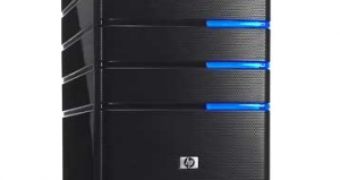Microsoft has released an update designed to fix all the issues that survived past the last upgrade to its home server offering.
The Windows Home Server refresh was delivered on August 24th, 2010 and is designed to help customers resolve no less than five problems associated with their product.
The Redmond company provided an extensive enumeration of all the glitches as well as detail the way in which deploying the latest update will help users deal with them.
Users will be able to find the information provided by the Redmond company below.
The refresh is currently live through Windows Update. The software giant is advising customers to enable the “Install updates automatically (recommended option on the computer)” in order to receive the update.
At the same time, Microsoft emphasized that customers need to be running Windows Home Server with the last upgrade delivered for the operating system in order to apply the update.
Power Pack 3, the equivalent of Service Pack 3, was delivered for Windows Home Server in November 2009, and continues to be available for download.
At the same time, Microsoft is currently test driving the next generation of Windows Home Server, codename Vail, which is also available for download.
Microsoft noted that the “following issues are fixed in this update.
Issue 1 - You cannot restore a client computer without manually creating partitions or mapping the source and destination volume.
After you install this update, you can restore a client computer without manually creating partitions or mapping the source and destination volume.
However, to enable this functionality, the following conditions must be true:
The backup must be stored on only one disk. The destination computer must have only one hard disk. The hard disk in the destination computer must be equal to or larger in size than the backup. The hard disk drive in the destination computer must be an internal hard disk drive. For example, IDE, SATA or e-SATA.
Issue 2 - 2048-bit certificates will soon replace 1024-bit certificates. This update enables Home Server users to use 2048-bit certificates before 2048-bit certificates become the industry standard.
After you install this update, you are asked to renew Website certificates if you have already registered the live domain for the websites.
After you finish the renewal process, the website certificates are upgraded to 2048-bit.
Issue 3 - You cannot change the backup settings if a volume that has backup-excluded folders is not available. In this situation, you must wait until the volume becomes available.
After you install this update, you can remove a missing volume that has backup-excluded folders from the backup process.
Issue 4 - You cannot remove all users' permissions from a shared folder. When you try to remove the permissions, the Windows Home Server console reports that the operation succeeds. However, the permissions are not removed.
After you install this update, you can successfully remove all users' permissions from a shared folder. If you tried to perform this operation before you install this update, the permissions will be removed when you restart the computer after you install this update.
Issue 5 - You may experience incompatibility issues when you use the next version of Microsoft Security Essentials on Windows Home Server.
This is a precautionary update. Windows Home Server is currently not supported by the next version of Microsoft Security Essentials Beta or final release. This update will address some incompatibility issues.”
Windows Home Server Power Pack 3 Evaluation is available for download here.

 14 DAY TRIAL //
14 DAY TRIAL //